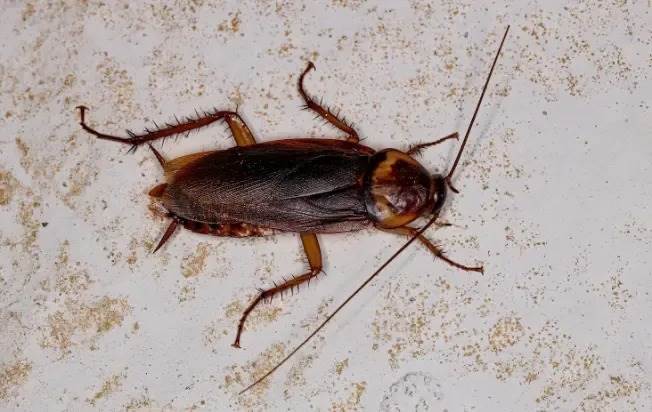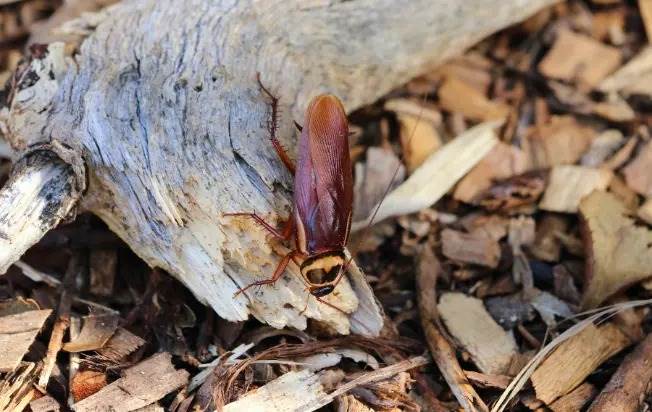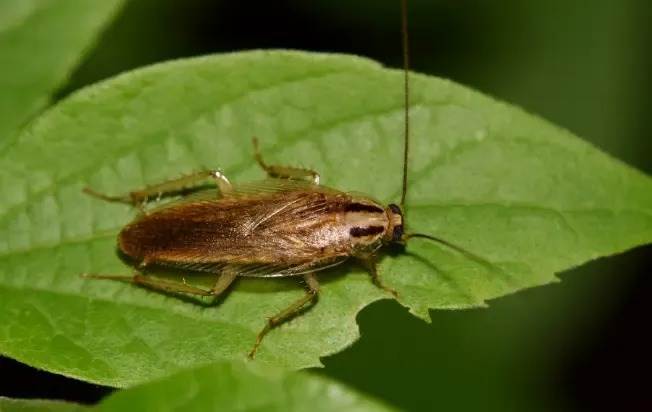How to Get Rid of Roaches Without Using Foggers (Bombs)
You’ve got company, and it’s not the good kind. If you spot cockroaches in your Florida home, you might stumble upon a seemingly perfect solution: a bug fogger or bug bomb. You think, this is it, the quick way to kill roaches once and for all. How can it not work?
The truth is that roach foggers technically work, but that doesn’t mean they’re the best or even a good idea. You’ll need to target roaches strategically to eliminate them, and a cockroach bomb may not be the most straightforward way to get there. Let’s take a closer look.
Key Takeaways
- Using a cockroach bomb can unnecessarily expose you and your family to nasty pesticides. It’s also likely that a fogger or bug bomb will drive bugs back into hiding, where they may continue to reproduce and cause an infestation.
- There are plenty of home-based and DIY roach killer solutions to treat a roach problem, including bait, sanitation, caulking, and more.
- When in doubt or if your treatment efforts aren’t successful, it’s probably best to contact professional pest control services like those from Native Pest Management.
Why Foggers Might Not Actually Be the Best Idea
Cockroach foggers, or “bug bombs,” spray insecticide around the room once you set it off. And, yes, they will kill whatever poor roach gets sprayed. But there’s a key problem with this idea — how often have you seen roaches just hanging out, waiting to get fogged?
Most cockroaches are not out in the open in your home or exposed enough to be targeted by your fogger. Instead, roaches prefer hiding in the dark, humid areas that are harder to access. Underneath and behind appliances, in cracks and crevices, outside underneath decaying organic matter, and in the sewer system are popular hideouts.
The active ingredients in these fogger products are repellent insecticides. Fogging systems are great at killing roaches on contact, but indoor foggers can actually push the majority of them further into their safer hiding places. Using foggers or roach bombs creates a long-term problem for you and your loved ones that will not go away. It will also unnecessarily expose you, your family, and your pets to insecticides.
Before You Act: Identify The Roach In Your Home
You don’t need to count on a roach fogger to say goodbye to unwanted pests. All you need is to be smarter than a cockroach! The best way to get rid of cockroaches depends on the type of cockroach you have in your home.
- American Cockroach: If the bug in question is big, brown, and looks like a “classic cockroach,” it’s probably an American cockroach, often called a Palmetto bug.
- Australian Cockroach: Similar to the American cockroach but typically smaller, Australian cockroaches are distinct due to their yellow markings.
- German Cockroach: Smaller roaches that seem to be coming from the cabinets and appliances in your kitchen are probably German cockroaches.
Let’s look at each type of cockroach and how you can effectively target it — without foggers, of course.
The Best Way To Get Rid Of American Cockroaches
American cockroaches are often found in dark, damp spaces. To get rid of them, you’ll need to figure out where they’re coming from.
Identifying an American Cockroach
The American cockroach is the largest of the common cockroaches you might see in your home. It can reach around 1.5” to 2” in length and is often found in buildings throughout Florida. Adult roaches take on a reddish brown color and may have a yellow or light brown band around their body. They have a pair of long cerci (antennae-like appendages) at the top of their abdomen.

American cockroaches may not be fun to look at, but they're relatively easy to address.
Getting Rid of American Roaches
Once you’re sure you’re dealing with American cockroaches, it’s time to get to work. Use these tips to send your roach visitors packing.
- Caulk Bathroom Fixtures: Have you had any remodeling done recently in the kitchen or bathroom? There may be an uncapped pipe that is allowing them to enter from the sewer system. There also may be a toilet in the home that has a broken wax seal underneath it. Get out the caulk and ensure the base of all toilets in the home is properly sealed. Also, seal around any plumbing penetrations and any exterior holes in the home you can find.
- Granular Cockroach Bait: Next, use a granular cockroach bait both inside and outside of your home. We like Maxforce Complete Granular Insect Bait. Make sure to carefully follow the label so that you do not apply it anywhere out in the open in your home that can be accessed by pets or children. The key is to get the granular bait in the places American Cockroaches are hiding – underneath appliances, in cracks and crevices, near the water heater, and outside of the home in plant beds and underneath trees.
- Spray Non-Repellent Insecticide: If you can safely spray an insecticide, you’ll want to treat the inside and outside of the home with a non-repellent product such as Arilon. When spraying any kind of insecticide, more is not better! The key is applying it in the right places, and if you read the label carefully, these places will be described in detail.
The Best Way to Get Rid of Australian Roaches
While the name may convince you otherwise, the Australian cockroach is the most common cockroach found outdoors in southern Florida. Luckily, handling them can be a piece of cake.
Identifying an Australian Cockroach
The Australian roach is distinguishable by the light yellow bands on the upper margins of the forewings. They’re often found under tree bark, in firewood piles and moist, dark places. These pests are easy to mistake for the American cockroach; both are similar in size and live outdoors.

Inside the home, Australian cockroaches can be found in pipes, sinks, toilets, and cupboards, or just like in outdoor habitats, they’re found in any spot with very little light and high humidity.
Getting Rid of Australian Roaches
These cockroaches are treated similarly to American roaches, with an emphasis on preventative measures and IPM practices. Because they live outdoors, they don’t create huge & problematic infestations like German roaches. Australian roaches are much easier to control and rarely cause anything but a small infestation that can be alleviated with the correct practices.
- Caulk Bathroom Fixtures: Take time to seal any potential roach entry points with caulk. Look out for areas that have been recently renovated or may be prone to leaking water.
- Ventilate Your Home: Improving ventilation in your home will help it stay dry, making it undesirable to the roaches.
- Use Liquid or Granular Cockroach Bait: For treatment, we recommend using liquid or granular cockroach baits. You can purchase and apply these yourself, or you can contact Native Pest Management for help.
- Spray Non-Repellent Insecticide: A roach non-repellent insecticide can help you cut down on the number of roaches in your home. Pair it with other long-term solutions for the best results.
The Best Way To Get Rid Of German Roaches
Don’t be fooled by their name — German cockroaches are the most common type you’ll find in Florida homes. They should be treated very differently than American cockroaches. They don’t live outdoors, so there is no point in treating or excluding the outside of your home for German roaches.
Identifying a German Cockroach
Adult German roaches are much smaller than American roaches — they’re only about 0.5” long on average. They’re brown to dark brown in color and have yellow markings that separate them from other roach species.

Getting Rid of German Roaches
German cockroaches are notoriously challenging to fully eliminate since they don’t respond to all treatment methods the way other pests do. But you can get the upper hand with these essential tips.
- Sanitation: The first thing you’ll want to focus on in a German roach treatment is sanitation. German roaches require food and water to survive, and the more of it that’s available to them, the quicker they will reproduce. And if there’s food out, the roaches will have little incentive to chow down on any bait you set out. Cleaning also helps you physically remove a number of roaches, which will allow you to use fewer pesticides.
- Use Gel Bait: It’s time to get out the bait. Gel bait. German roaches love gel bait, but they won’t travel far to get it. With whatever gel bait you use (we like Vendetta Plus,) the important thing is to apply it correctly. You’ll want to use only pea-sized droplets and place them in cracks and crevices where German roaches hide and breed.
- Use Insect Growth Regulator: One key product many homeowners don’t know to use is an Insect Growth Regulator (IGR). German roaches breed so quickly that if their life cycle is not interrupted, you may never get 100% control. Their egg casings will keep hatching, and you’ll have to keep treating them over and over again. By using an IGR like Gentrol Point Source, you can break this life cycle and get rid of roaches for good.
- Non-Repellent Insecticide Spray: If the above products simply aren’t doing the trick, you can break out the big guns. A non-repellent spray such as Alpine WSG works very well when applied to cracks in crevices. Make sure not to spray any bait you’ve applied, or it won’t attract roaches. Do not expect this spray to kill the roaches on contact. The goal with all German roach control methods is to allow them to survive long enough to inadvertently bring the products back to the others that are hiding in inaccessible areas of your home.
When to Call Professional Pest Control Services
If your roach problem doesn’t respond to the treatment methods discussed here, it may be time to call in the pros. Likewise, if the roaches seem to disappear temporarily but continuously return, you might need a more concentrated and specific strategy. Professional pest control companies can help you safely and permanently remove the roaches in your home.
Native Pest Management is your local provider of pet-safe pest control in Florida. With over 3000 verified five-star reviews across sites, including Google, Yelp, Nextdoor, Facebook, the BBB, and Angie’s List, we do what it takes to safely solve your pest problem.
Call us today to schedule your free pest control inspection.
Helpful Articles
How Bad Is It To Have Cockroaches In Your West Palm Beach Home?
West Palm Beach Property Owner's Ultimate Cockroach Control Guide
Here's Why West Palm Beach Property Owners Should Consider A Pest Control Plan
